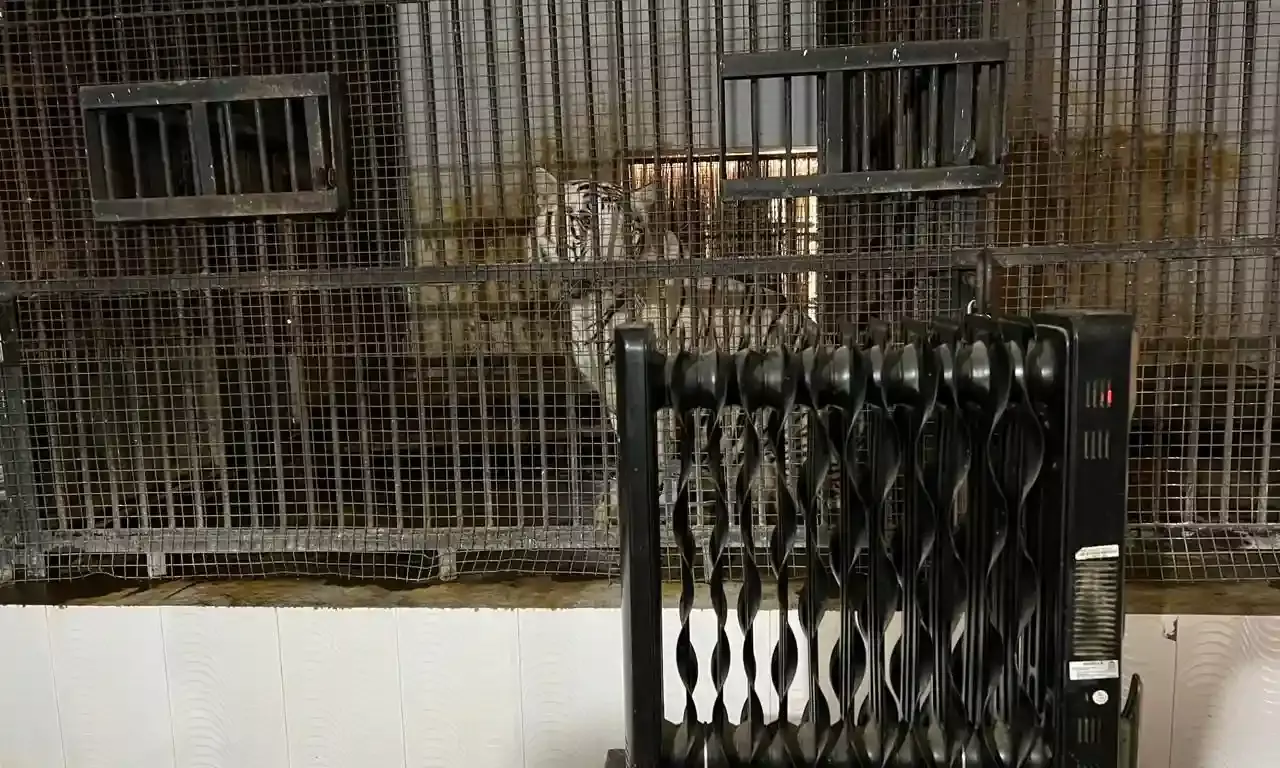Comprehensive Measures Adopted to Protect Wildlife from Winter Cold at Patna Zoo
Environment Minister Dr. Prem Kumar inspects Sanjay Gandhi Biological Park, where innovative precautions such as oil heaters, straw bedding, specialized diets, and continuous monitoring ensure wildlife safety amidst severe cold conditions.;

In view of the increasing cold in Patna, Dr. Prem Kumar, Honorable Minister, Department of Environment, Forest and Climate Change, Government of Bihar, inspected the wildlife enclosures of Patna Zoo on 09-01-2025 to inspect the activities being done for the maintenance of wildlife in Patna Zoo. He inspected the Hoolock Gibbon, Tiger, Bird Cage, Chital, Zebra, Giraffe, Elephant and Small Cat enclosures and gave necessary instructions to the zoo officials.
During the inspection, the Director, Sanjay Gandhi Biological Park, Patna informed the Honorable Minister, Department of Environment, Forest and Climate Change, Government of Bihar about all the precautionary measures taken to protect wildlife from cold during the winter season in the light of the prevailing system for the past years.
He informed that all the work to protect wildlife from cold in all the enclosures has been started from the month of October, 2024. In which the windows and other ventilation openings of the night house of all the wild animals have been closed with thatch grass and bamboo chachri so that the wild animals sitting in the night house do not feel cold during the cold wave. Wooden platforms have been placed in the cells of all the night houses for the wild animals to sit so that the wild animals do not feel cold from the ground.
Oil heaters have been installed in the night house so that the normal temperature of the night house is maintained. Blankets have been given to the wildlife of primates species such as monkey, langur, chimpanzee, hoolock gibbon, lion tail macaque etc. Blankets have been laid on the floor in the cells of wildlife of reptile species such as python, cobra, viper, dhamin etc. Also, bulbs have been installed to maintain normal temperature in their cells. For the herbivorous wild animals, a bed of straw has been made in the shed of their enclosure and to protect them from the cold waves of east and west, the enclosure has been made with thatch grass and bamboo chachri.
During the cold wave, the entire body of the elephant is being massaged with mustard oil at regular intervals and sufficient sugarcane, soybean, bhusami fruit and boiled rice are being given in the diet. Calcium and multivitamin medicines are being given to the wild animals. Like every year, the diet of carnivorous wild animals has been increased. Chyavanprash, honey, jaggery kheer, amla marmalade and seasonal fruits are being given to the chimpanzee. Seasonal fruits, honey, eggs, jaggery kheer, sugarcane etc. are being given to the bear in the diet. To protect the birds from the cold wave, plastic sheets and agronet have been used in the enclosure so that necessary light and ventilation is maintained. To protect from the cold wave, straw has been spread in the night-house and exhibit area of the zebra and giraffe enclosure.
The Hon'ble Minister of Environment, Forest and Climate Change Department, Government of Bihar directed the Director, Sanjay Gandhi Biological Park, Patna to do all the necessary work on priority to protect the wildlife from cold.
Details of management activities being carried out in Sanjay Gandhi Biological Park, Patna to protect wildlife from cold during winter season
As a precautionary measure to protect wildlife from cold during winter season, in the light of the advice given in the meetings of the Health Advisory Committee of Sanjay Gandhi Biological Park, Patna and the prevailing system for the past years, the following management works have been started from the month of October, 2024:-
1. The windows and other ventilation openings of the night house of all the wildlife have been closed with straw grass and bamboo chachri so that the wildlife sitting in the night house does not feel cold during the cold wave.
2. Wooden platforms have been placed in the cells of all the night houses for the wildlife to sit so that the wildlife does not feel cold from the ground.
3. Oil heaters have been installed in the night house so that the night house maintains normal temperature.
4. Blankets have been given to primates such as monkeys, langurs, chimpanzees, hoolock gibbons, lion tail macaques etc.
5. Blankets have been spread on the floor in the cells of reptiles such as python, cobra, viper, dhamin etc. Also, bulbs have been installed in their cells to maintain normal temperature.
6. For herbivorous wild animals, straw beds have been made in the shed of their enclosure and fencing has been done with straw grass and bamboo straw to protect them from the cold waves from the east and west.
7. During the cold wave, the entire body of the elephant is being massaged with mustard oil at regular intervals and sufficient sugarcane, soyabean, seasonal fruits and boiled rice are being given in the diet.
8. Calcium and multivitamin medicines are being given to the wild animals.
9. Like every year, the diet of carnivorous wildlife has been increased.
10. Chyavanprash, honey, jaggery kheer, amla marmalade and seasonal fruits are being given to the chimpanzees.
11. Seasonal fruits, honey, eggs, jaggery kheer, sugarcane etc. are being given to the bears.
12. To protect the birds from cold wave, plastic sheets and agronet have been used in the enclosures so that necessary light and ventilation is maintained.
13. Straw has been spread in the night house and display area of the zebra and giraffe enclosures to protect them from cold wave.
14. The wildlife is under continuous surveillance for 24 hours. Winter jackets have been distributed to all the personnel for effective monitoring.

